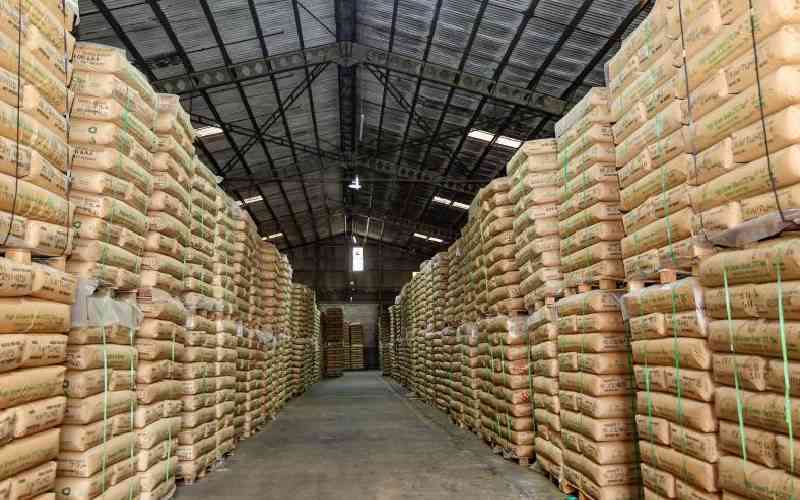- Southwest Airlines tells staff 'difficult decisions' ahead in push to boost profits
- You can't always refinance a mortgage to capitalize on lower rates: Here's when a lender may say 'no'
- Gold strikes record high as Fed rate cut maintains bullish mood
- Minneapolis Fed President Kashkari sees a slower pace of rate cuts ahead
- Britain's finance minister calls for spending discipline but no return to austerity
The world of forex trading, with its vast potential for profit, can be both exciting and daunting. One of the most powerful tools at a trader’s disposal is leverage. It’s like a financial magnifying glass, allowing you to control larger positions in the market with a relatively small amount of capital. But as with any powerful tool, it’s crucial to understand how to use forex leverage wisely.
In essence, leverage amplifies both your potential gains and losses. It can turn a modest investment into a substantial profit, but it can also magnify losses just as quickly. That’s why it’s so vital to approach leverage with caution and a well-thought-out strategy.
Think of leverage ratios as the zoom level on your magnifying glass. A higher leverage ratio means greater magnification, but also a narrower field of view and increased sensitivity to market movements. Understanding these ratios and how they interact with your trading capital is fundamental to using leverage effectively.
In this guide, we’ll delve into the intricacies of forex leverage, exploring everything from margin requirements and risk management to practical tips for maximising your leverage advantage. Whether you’re a seasoned trader or just starting, this guide will equip you with the knowledge and confidence to navigate the exciting world of leveraged forex trading.
Understanding Margin and Leverage
In the realm of forex trading, margin and leverage are two sides of the same coin. Margin is your collateral, the portion of your trading capital that you set aside as a good faith deposit with your broker. It acts as a guarantee that you can cover potential losses on your leveraged trades.
The amount of margin required for a trade is determined by the leverage ratio you choose and the size of your position. It’s like borrowing money from your broker to trade larger amounts than you could with your own funds alone. The higher the leverage, the less margin you need to put up, but the greater your potential risk and reward.
It’s important to keep track of your free margin and used margin. Free margin is the portion of your trading capital that’s available for opening new positions, while used margin is the amount currently tied up in your existing trades. Maintaining sufficient free margin is critical to avoid a margin call.
A margin call is a situation where your account equity falls below a certain level, usually due to losses on leveraged trades. When this happens, your broker will require you to deposit more funds to bring your account back to the minimum margin requirement. If you fail to do so, your broker may liquidate some or all of your positions to cover the shortfall. It’s a stressful scenario that can lead to significant losses, so it’s best to avoid it altogether through prudent risk management.
Choosing the Right Leverage Ratio for Your Forex Trades
Selecting the right leverage ratio is a critical decision that can significantly impact your forex trading journey. It’s not a one-size-fits-all scenario; the ideal leverage depends on various factors, including your risk tolerance, trading style, and market conditions.
First and foremost, you need to honestly assess your risk tolerance. How much are you comfortable potentially losing on a trade? Higher leverage means greater potential profits, but also the possibility of larger losses. If you’re risk-averse, it’s wise to stick to lower leverage ratios.
Your trading style also plays a role. If you’re a scalper who makes frequent, short-term trades, you might be able to handle higher leverage. On the other hand, if you’re a swing trader who holds positions for longer periods, lower leverage might be more suitable.
Market conditions are another factor to consider. During volatile periods, it’s generally advisable to use lower leverage to protect your capital from sudden price swings.
High leverage can be tempting, offering the allure of massive gains with minimal investment. However, it’s essential to remember that leverage is a double-edged sword. While it can amplify your profits, it can also magnify your losses just as quickly.
Low leverage, on the other hand, provides a more conservative approach. It limits your potential gains but also offers greater protection against substantial losses. It’s often a good starting point for beginners who are still learning the ropes of forex trading.
Finding the right leverage ratio is a balancing act. It’s about finding the sweet spot between maximising your profit potential and managing your risk effectively. It’s a personal decision that should be based on careful consideration of your individual circumstances and trading goals.
Risk Management and Leverage in Forex Trading
When it comes to using leverage in forex trading, risk management is not just important—it’s absolutely paramount. Leverage can magnify your profits, but it can also magnify your losses just as dramatically. Without proper risk management, even a small adverse market movement can wipe out your entire trading account.
One of the most crucial risk management tools for leveraged trading is the stop-loss order. It’s like an insurance policy for your trades, automatically closing your position if the market moves against you beyond a certain point. By setting stop-loss orders, you can limit your potential losses and protect your capital from excessive risk.
Position sizing is another key element of risk management. It involves determining the appropriate lot size for your trades based on your account balance, risk tolerance, and the leverage you’re using. By carefully controlling your position size, you can ensure that even if a trade goes against you, the loss won’t be catastrophic.
Diversification is also vital when trading with leverage. Don’t put all your eggs in one basket. Spread your risk across different currency pairs and trading strategies. This way, if one trade goes sour, others may offset the loss.
Perhaps the most important rule of leverage is to avoid overleveraging. It’s easy to get carried away by the potential for big gains, but using excessive leverage is a recipe for disaster. It can lead to margin calls, forced liquidations, and devastating losses. Remember, it’s better to make consistent, smaller profits with manageable risk than to chase massive gains with the potential for equally massive losses.
In essence, risk management is about preserving your capital and ensuring your longevity in the forex market. It’s about understanding that losses are inevitable, but by managing your risk effectively, you can minimise their impact and stay in the game for the long haul. Leverage can be a powerful tool, but only when used with discipline and a solid risk management plan.
Practical Tips for Using Leverage Effectively
Now that we’ve covered the fundamentals of leverage and risk management, let’s explore some practical tips for using leverage effectively in your forex trading.
First and foremost, it’s crucial to start small. If you’re new to leverage, don’t jump in with a high leverage ratio right away. Begin with a lower leverage level and gradually increase it as you gain experience and confidence. This approach allows you to get comfortable with the dynamics of leveraged trading without exposing yourself to excessive risk. Never use leverage without a clear trading strategy. Before entering any trade, have a well-defined plan outlining your entry and exit points, stop-loss levels, and profit targets. Leverage can amplify the impact of impulsive decisions, so it’s essential to stick to your plan and avoid emotional trading. Monitor your leveraged positions closely. The forex market can be volatile, and even a small price movement can have a significant impact on your leveraged trades. Stay informed about market news and economic events that could affect your positions, and be prepared to adjust your strategy if necessary. Remember that emotions and leverage are a dangerous mix. Fear and greed can cloud your judgement and lead to impulsive decisions that can be costly in leveraged trading. Maintain a disciplined approach and stick to your risk management plan, even when the market gets turbulent. Choose a reputable forex broker with transparent margin requirements and fair trading practices. Your broker plays a crucial role in your leveraged trading experience, so it’s important to select one that you can trust.
By following these practical tips and incorporating them into your trading routine, you can harness the power of leverage while minimising its potential risks. Remember, leverage is a tool, not a magic bullet. Use it wisely, and it can significantly enhance your forex trading journey.
Conclusion
In the dynamic world of forex trading, leverage is a tool that can significantly amplify your potential gains. However, it’s crucial to approach it with caution and a deep understanding of its mechanics. Remember, leverage is a double-edged sword; it can magnify your profits, but it can also magnify your losses.
Throughout this guide, we’ve explored the key aspects of using forex leverage effectively. We’ve discussed the relationship between margin and leverage, the importance of choosing the right leverage ratio, and the critical role of risk management in leveraged trading. We’ve also provided practical tips for maximising your leverage advantage while minimising potential risks.
It’s important to remember that leverage is not a get-rich-quick scheme. It’s a strategic tool that requires discipline, patience, and a well-thought-out trading plan. Never let emotions dictate your leveraged trades, and always prioritise risk management.
As with any skill, mastering the art of using forex leverage takes time and practice. Start small, learn from your experiences, and continuously refine your strategies. Remember, the forex market is constantly evolving, so it’s essential to stay informed and adapt your approach accordingly.
By following the principles outlined in this guide and approaching leverage with a responsible mindset, you can significantly enhance your forex trading potential and achieve your financial goals.
FAQs about Forex Leverage
Let’s address some common questions about forex leverage to further solidify your understanding:
What is the maximum leverage allowed in forex? The maximum leverage offered varies depending on the regulatory environment and the specific broker. In some jurisdictions, leverage can be as high as 1:500 or even 1:1000. However, it’s important to remember that higher leverage also means higher risk.
Can I lose more money than I invest with leverage? Yes, it’s possible to lose more than your initial investment with leverage. This is because leverage allows you to control larger positions than you could with your own capital alone. If the market moves against you, your losses can exceed your initial deposit.
How does leverage affect my trading profits and losses? Leverage amplifies both your profits and losses. For example, if you use 1:100 leverage and the market moves in your favour by 1%, your profit will be 100 times greater than if you had not used leverage. However, if the market moves against you by 1%, your loss will also be 100 times greater.
What is a margin call, and how can I avoid it? A margin call occurs when your account equity falls below the minimum margin requirement set by your broker. This usually happens due to losses on leveraged trades. To avoid margin calls, it’s crucial to use leverage prudently, set stop-loss orders, and monitor your positions closely.
Is it advisable to use high leverage as a beginner forex trader? It’s generally not recommended for beginners to use high leverage. As a novice trader, it’s important to focus on learning the fundamentals of forex trading and developing a sound risk management strategy. Start with lower leverage and gradually increase it as you gain experience and confidence.
By understanding these FAQs and incorporating the knowledge gained from this guide, you’ll be well-equipped to navigate the exciting world of leveraged forex trading. Remember, knowledge is power, and with the right approach, leverage can be a valuable tool in your trading arsenal.















